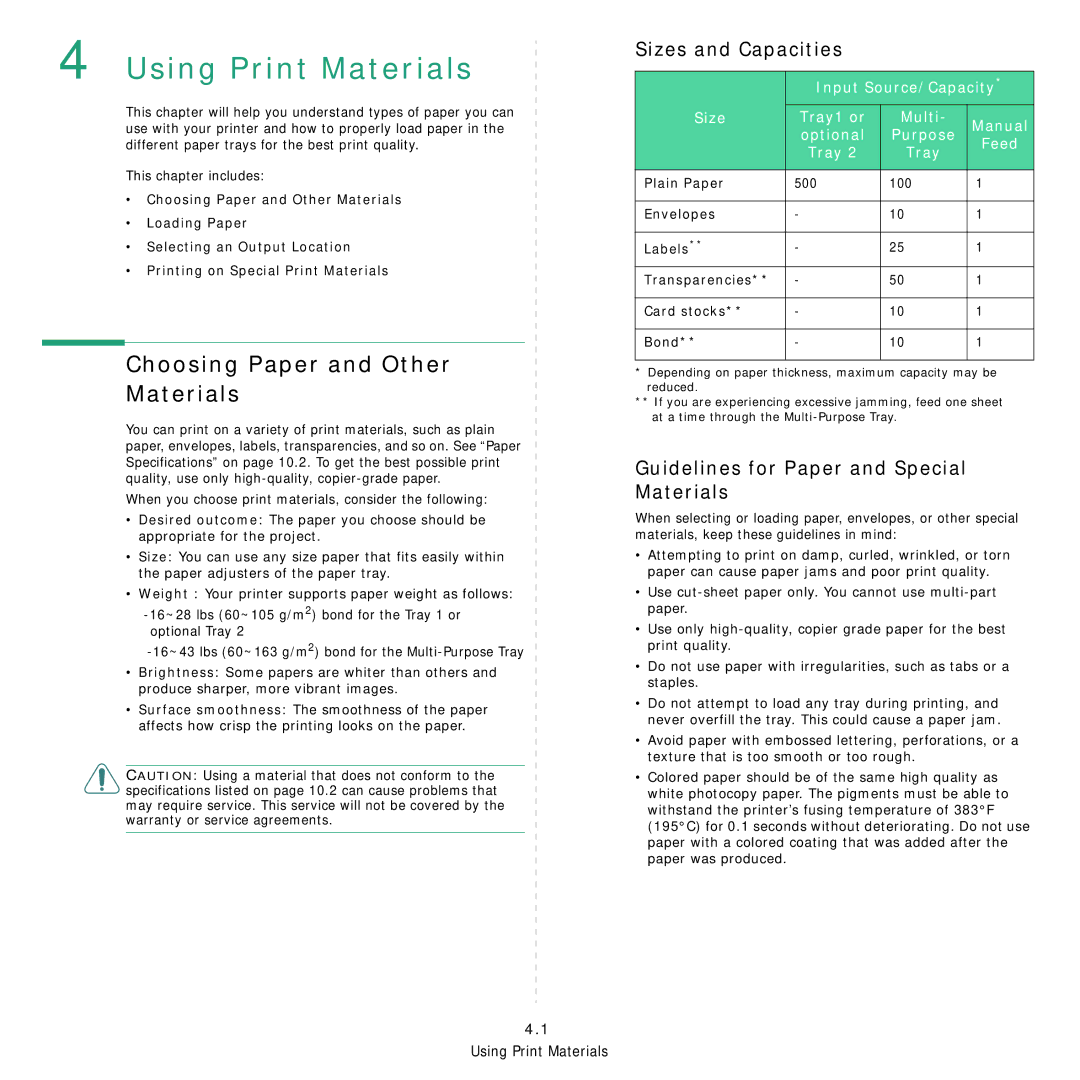
4 Using Print Materials
This chapter will help you understand types of paper you can use with your printer and how to properly load paper in the different paper trays for the best print quality.
This chapter includes:
•Choosing Paper and Other Materials
•Loading Paper
•Selecting an Output Location
•Printing on Special Print Materials
Choosing Paper and Other
Materials
You can print on a variety of print materials, such as plain paper, envelopes, labels, transparencies, and so on. See “Paper Specifications” on page 10.2. To get the best possible print quality, use only
When you choose print materials, consider the following:
•Desired outcome: The paper you choose should be appropriate for the project.
•Size: You can use any size paper that fits easily within the paper adjusters of the paper tray.
•Weight : Your printer supports paper weight as follows:
•Brightness: Some papers are whiter than others and produce sharper, more vibrant images.
•Surface smoothness: The smoothness of the paper affects how crisp the printing looks on the paper.
CAUTION: Using a material that does not conform to the specifications listed on page 10.2 can cause problems that may require service. This service will not be covered by the warranty or service agreements.
Sizes and Capacities
| Input Source/Capacity* | ||
Size | Tray1 or | Multi- | Manual |
| optional | Purpose | |
| Tray 2 | Tray | Feed |
|
| ||
|
|
|
|
Plain Paper | 500 | 100 | 1 |
|
|
|
|
Envelopes | - | 10 | 1 |
|
|
|
|
Labels** | - | 25 | 1 |
Transparencies** | - | 50 | 1 |
|
|
|
|
Card stocks** | - | 10 | 1 |
|
|
|
|
Bond** | - | 10 | 1 |
|
|
|
|
*Depending on paper thickness, maximum capacity may be reduced.
**If you are experiencing excessive jamming, feed one sheet at a time through the
Guidelines for Paper and Special Materials
When selecting or loading paper, envelopes, or other special materials, keep these guidelines in mind:
•Attempting to print on damp, curled, wrinkled, or torn paper can cause paper jams and poor print quality.
•Use
•Use only
•Do not use paper with irregularities, such as tabs or a staples.
•Do not attempt to load any tray during printing, and never overfill the tray. This could cause a paper jam.
•Avoid paper with embossed lettering, perforations, or a texture that is too smooth or too rough.
•Colored paper should be of the same high quality as white photocopy paper. The pigments must be able to withstand the printer’s fusing temperature of 383°F (195°C) for 0.1 seconds without deteriorating. Do not use paper with a colored coating that was added after the paper was produced.
